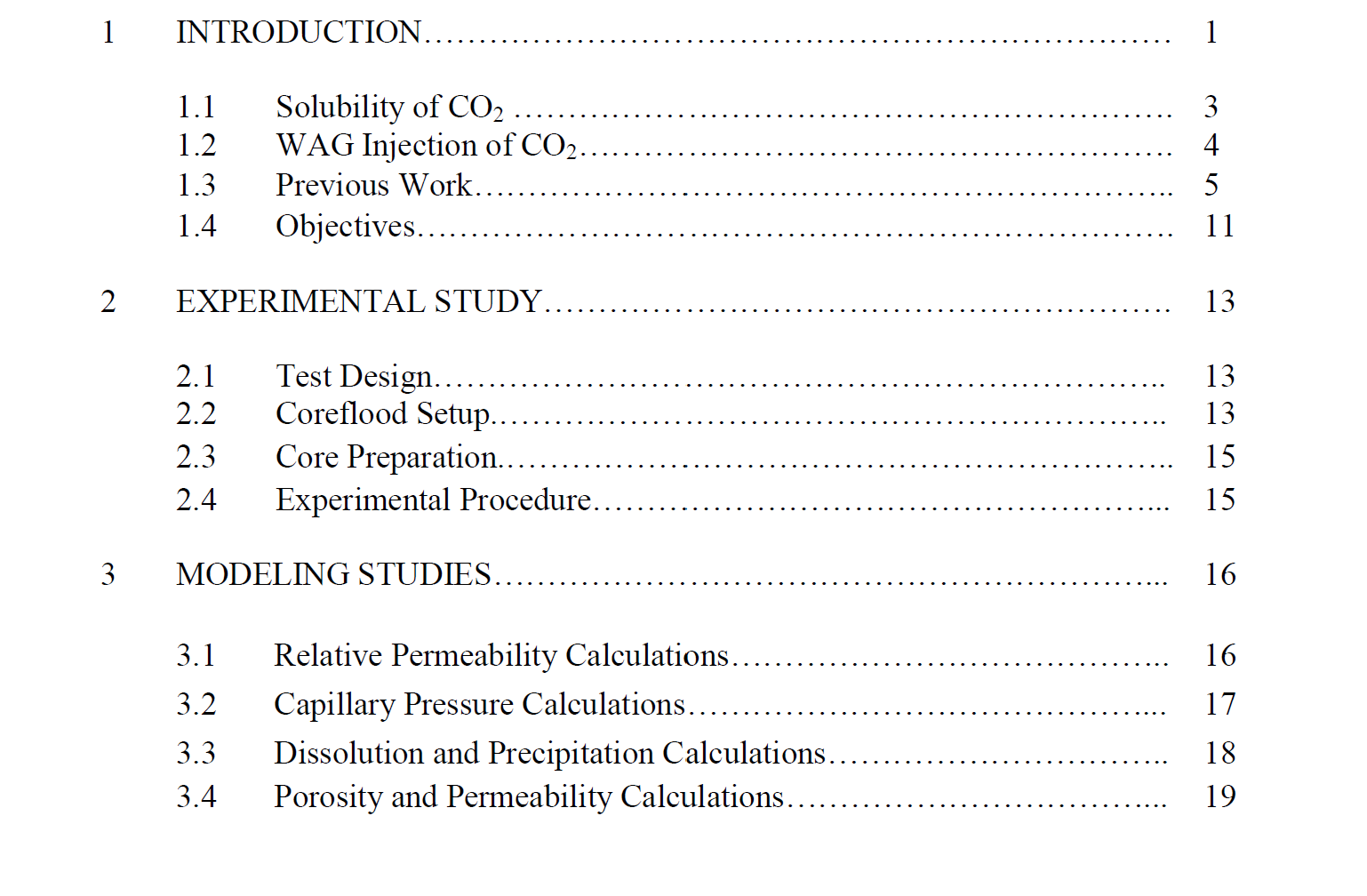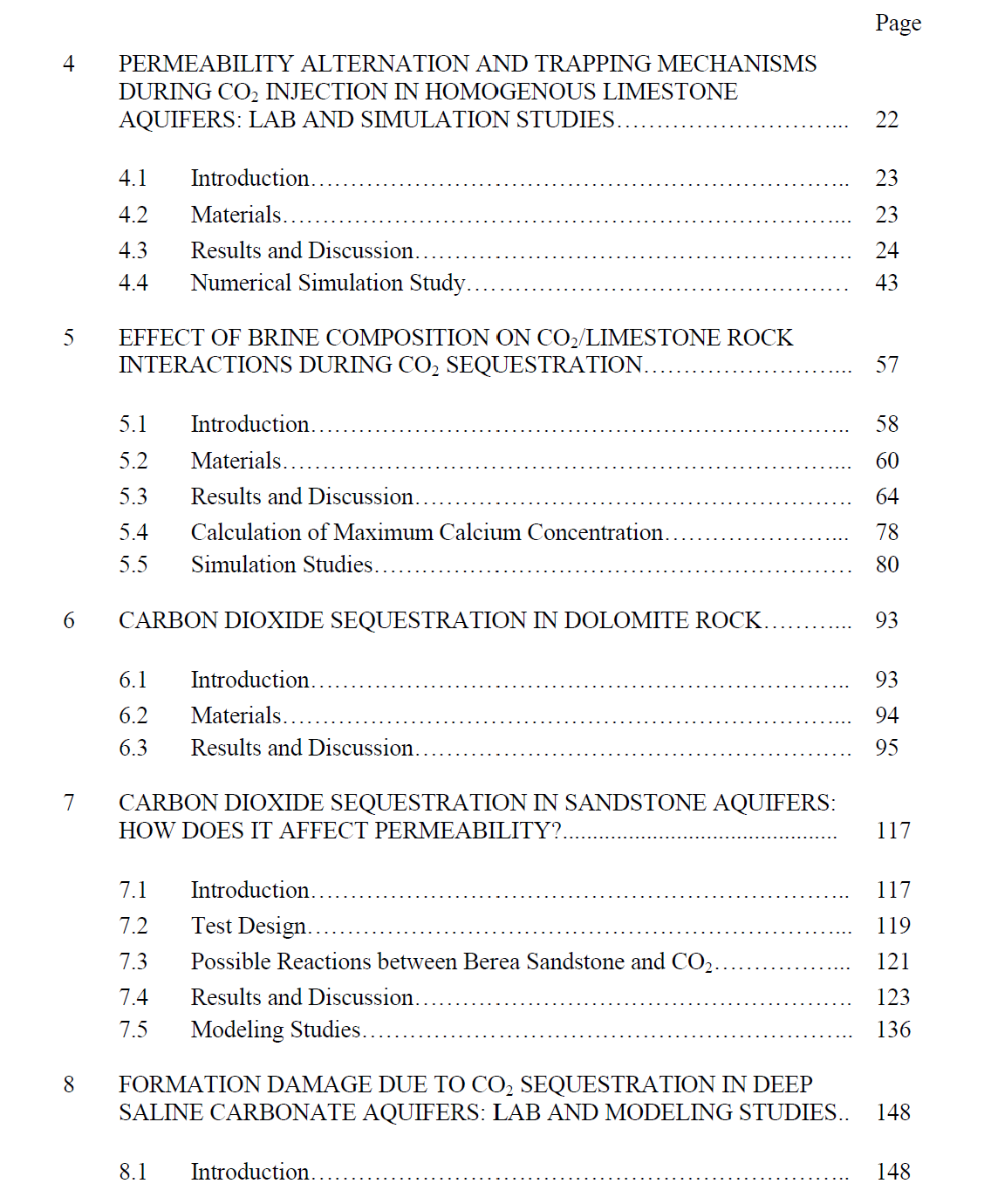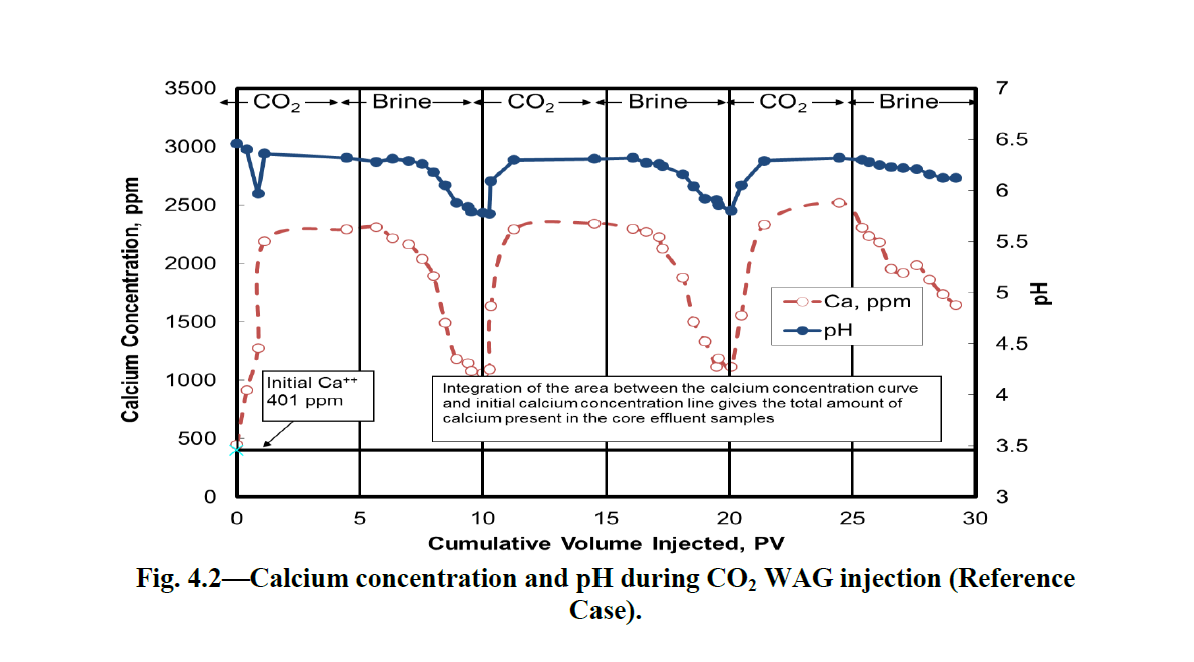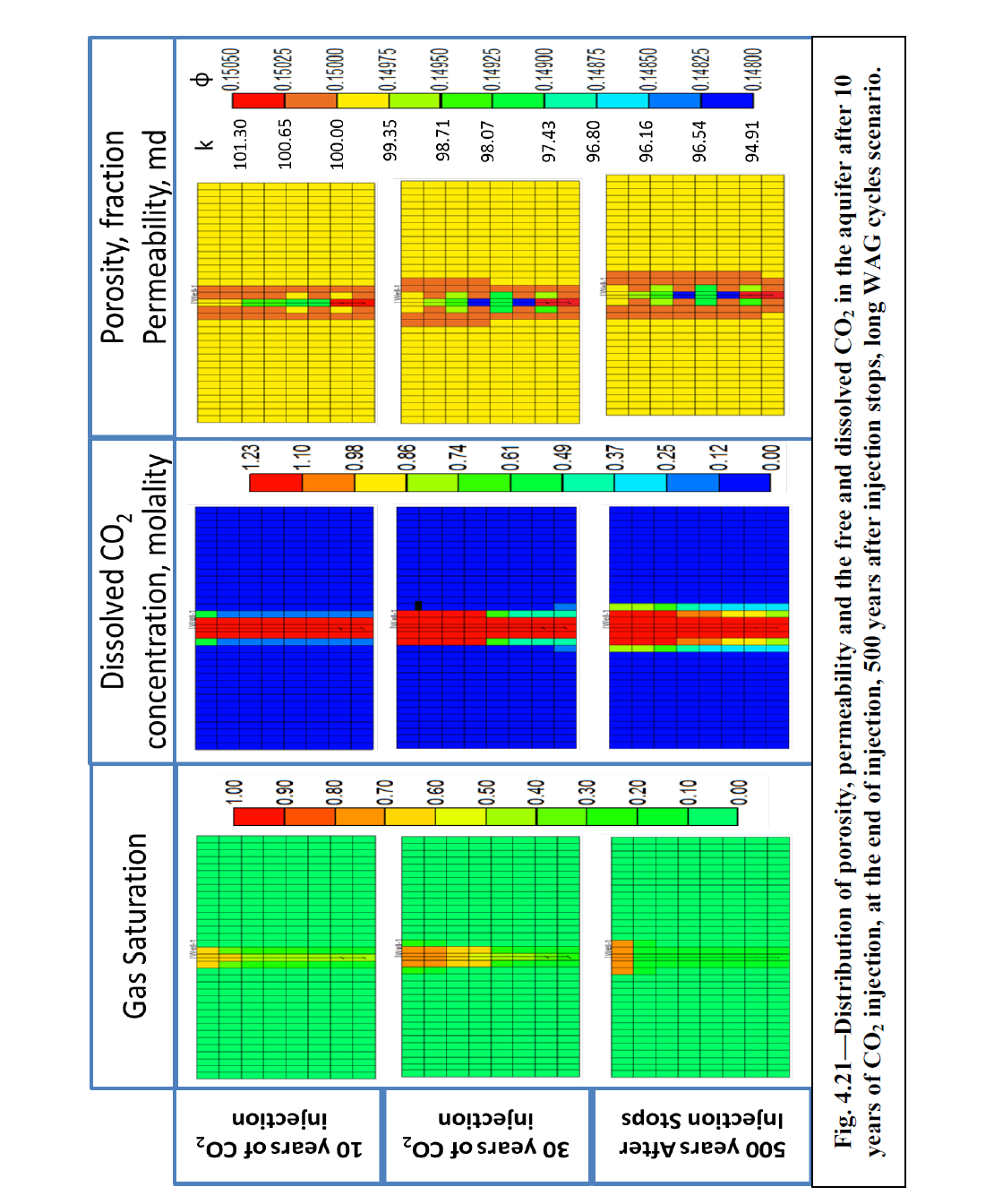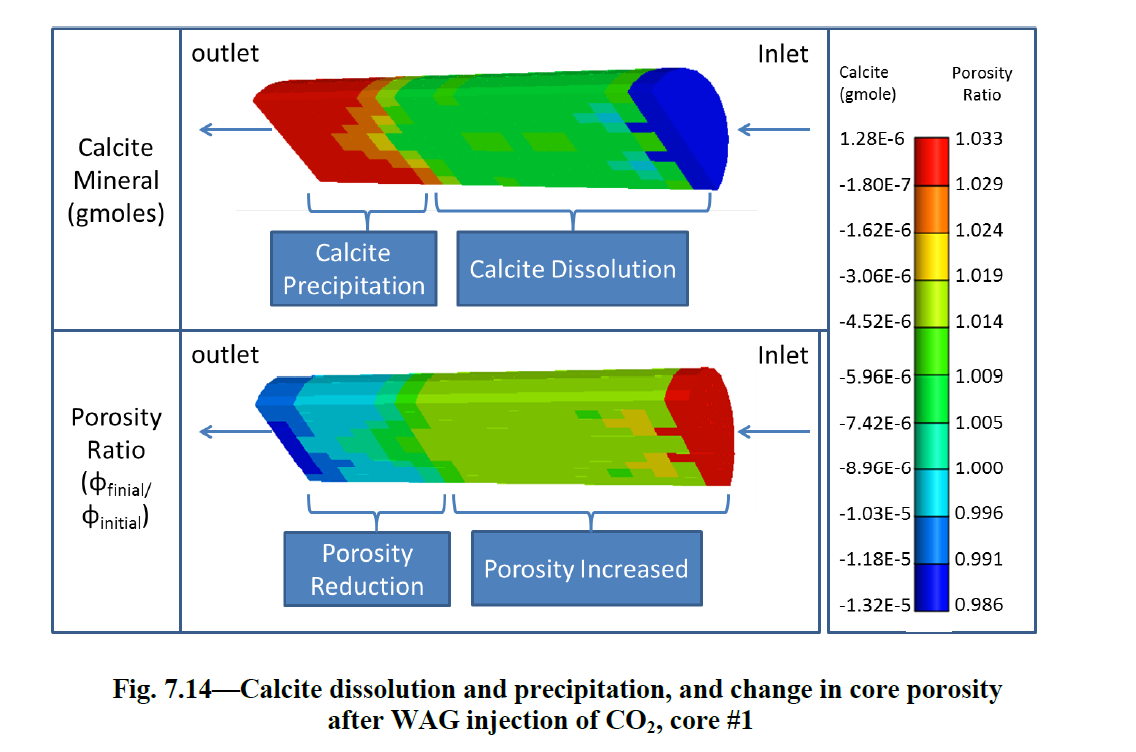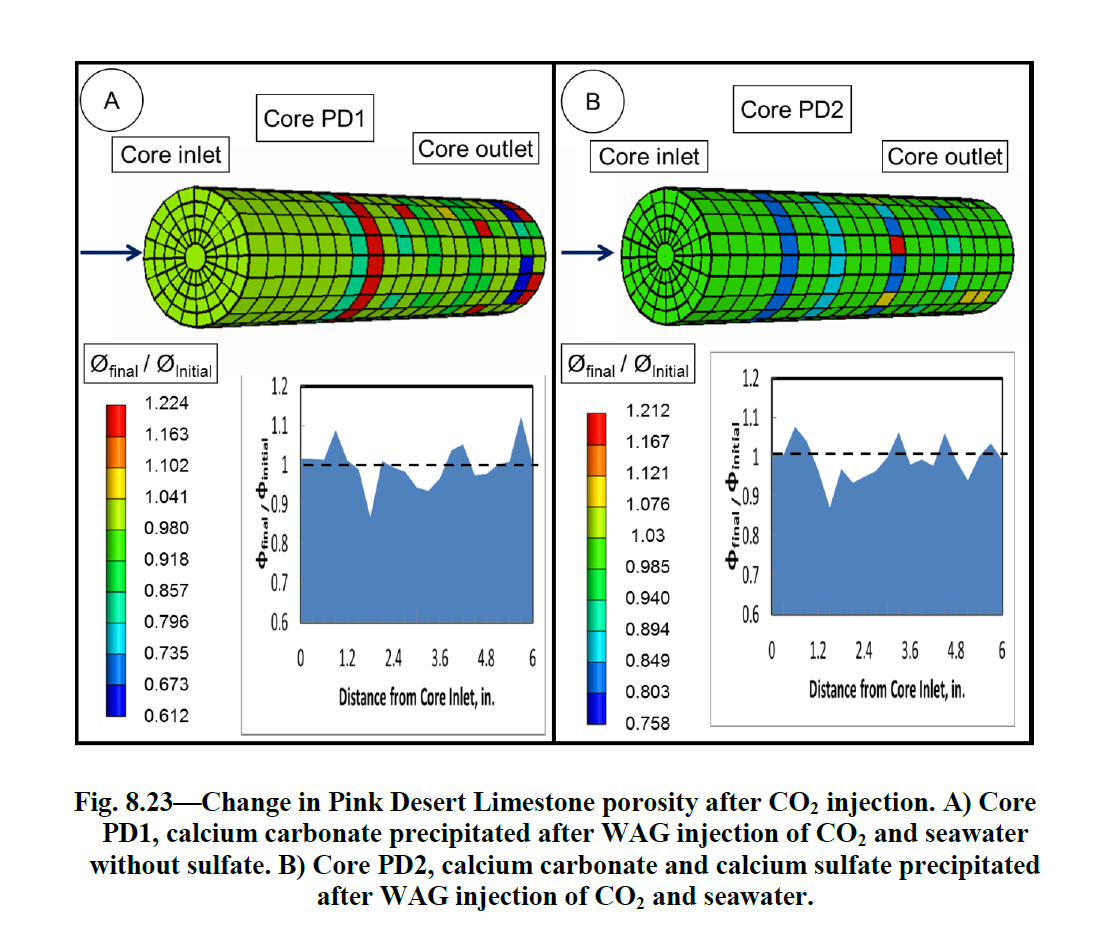Formation Damage due to CO2 Sequestration in Saline Aquifers
二氧化碳(CO2)封存被定义为将原本应该释放到大气中的气体移除并安全储存于一个可靠的地方。目前,考虑将CO2封存在地下以减少大气中的CO2排放量。然而,在封存之前,需要更好地理解CO2、水和岩石之间的化学和物理相互作用。这些相互作用可以通过评估注入前后水中的矿物含量变化或CO2注入期间井注入能力的改变来进行评估。
岩石溶解可能对渗透率产生积极影响,也可能通过沉淀产生负面影响。CO2注入操作涉及多个物理和化学过程;多相流通过多孔介质中的卤水和CO2流动来表示,溶质传输通过CO2在卤水中溶解形成弱碳酸来表示,溶解-沉积动力学则可通过碳酸的溶解和反应产物的沉淀来观察,而流体力学不稳定性(粘性撕裂)、毛细效应和重力效应导致的CO2上升则是由于使用粘性较大的CO2取代不粘性的卤水而引起的。
本研究旨在将形成伤害与其他变量(如压力、温度、岩石类型、岩石孔隙度、水组分、水中硫酸盐浓度、注入的CO2体积、注入的水体积、CO2与水的体积比、CO2注入速率和水注入速率)相关联。为了实现这一目标,将在模拟现场条件下进行实验室实验,对不同的岩石类型(如碳酸盐岩、石灰岩、白云石和砂岩)施加压力和温度,使用CO2在超临界相下,并研究不同CO2-水-岩石之间的化学反应。
此外,还使用地球化学模拟器(CMG-GEM)对实验结果进行定量分析。结果显示,对于碳酸盐岩芯,保持CO2/卤水体积比大于1.0可以减少封存在卤水中碳酸氢根的形成,并有助于最小化碳酸钙的沉淀。此外,增加WAG注入(注入周期中CO2和卤水之间的交替注入)中的循环体积可以减少对岩心的损伤。在CO2封存过程中,硫酸盐沉淀主要受温度控制。对于总溶解固体(TDS)含量较高的形成卤水,即使硫酸盐浓度较低,仍会发生硫酸钙的沉淀。对于白云石岩石来说,温度、注入流量和注入方案对岩心渗透率没有明显影响,影响渗透率变化的主要因素是初始渗透率。砂岩岩心显示出明显的伤害;CO2注入后,观察到岩心渗透率损失在35%至55%之间。对于较短的WAG注入,伤害更为严重;减少每个循环注入的卤水体积可以减少伤害。在较高温度(摄氏200和250度)下,伤害更为显著,与摄氏70度相比,伤害更为严重。
Carbon dioxide (CO2) sequestration is defined as the removal of gas that would be emitted into the atmosphere and its subsequent storage in a safe, sound place. CO2 sequestration in underground formations is currently being considered to reduce the amount of CO2 emitted into the atmosphere. However, a better understanding of the chemical and physical interactions between CO2, water, and formation rock is necessary before sequestration. These interactions can be evaluated by the change in mineral content in the water before and after injection, or from the change in well injectivity during CO2 injection.
It may affect the permeability positively due to rock dissolution, or negatively due to precipitation. Several physical and chemical processes cover the CO2 injection operations; multiphase flow in porous media is represented by the flow of the brine and CO2, solute transportation is represented by CO2 dissolution in the brine forming weak carbonic acid, dissolution-deposition kinetics can be seen in the rock dissolution by the carbonic acid and the deposition of the reaction products, hydrodynamic instabilities due to displacement of less viscous brine with more viscous CO2 (viscous fingering), capillary effects and upward movement of CO2 due to gravity effect.
The objective of the proposed work is to correlate the formation damage to the other variables, i.e. pressure, temperature, formation rock type, rock porosity, water composition, sulfates concentration in the water, CO2 volume injected, water volume injected, CO2 to water volumetric ratio, CO2 injection rate, and water injection rate. In order to achieve the proposed objective, lab experiments will be conducted on different rock types (carbonates, limestone and dolomite, and sandstone) under pressure and temperature that simulate the field conditions. CO2 will be used at the supercritical phase and different CO2-water-rock chemical interactions will be addressed. Quantitative analysis of the experimental results using a geochemical simulator (CMG-GEM) will also be performed.
The results showed that for carbonate cores, maintaining the CO2/brine volumetric ratio above 1.0 reduced bicarbonate formation in the formation brine and helped in minimizing precipitation of calcium carbonate. Additionally, increasing cycle volume in WAG injection reduced the damage introduced to the core. Sulfate precipitation during CO2 sequestration was primarily controlled by temperature. For formation brine with high total dissolved solids (TDS), calcium sulfate precipitation occurs, even at a low sulfate concentration. For dolomite rock, temperature, injection flow rate, and injection scheme don’t have a clear impact on the core permeability, the main factor that affects the change in core permeability is the initial core permeability. Sandstone cores showed significant damage; between 35% and 55% loss in core permeability was observed after CO2 injection. For shorter WAG injection the damage was higher; decreasing the brine volume injected per cycle, decreased the damage. At higher temperatures, 200 and 250 degrees F, more damage was noted than at 70 degrees F.
